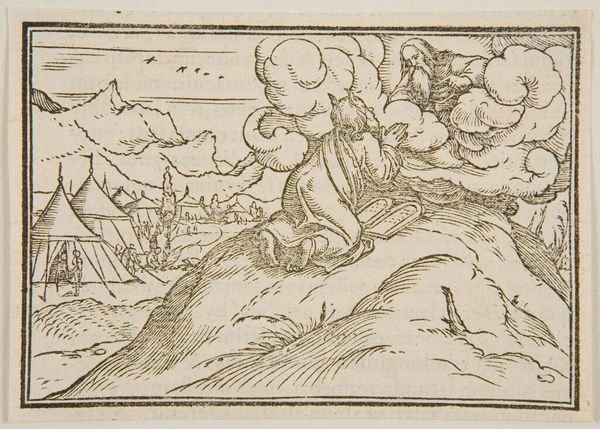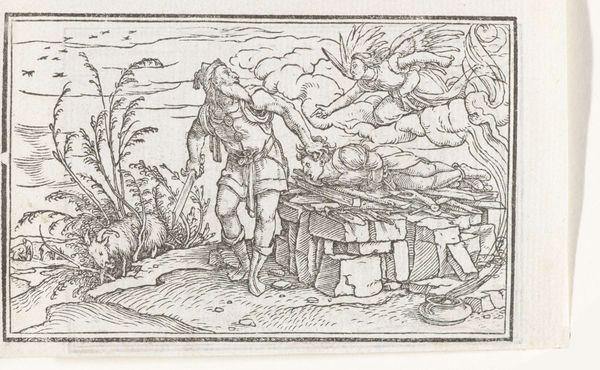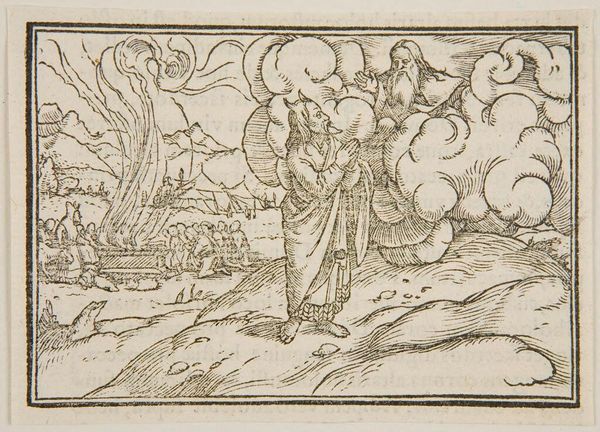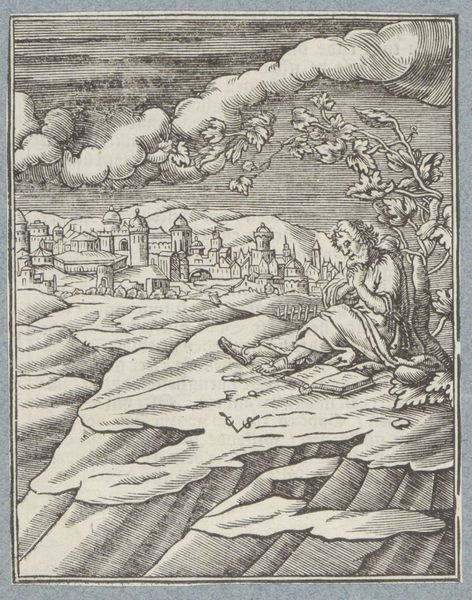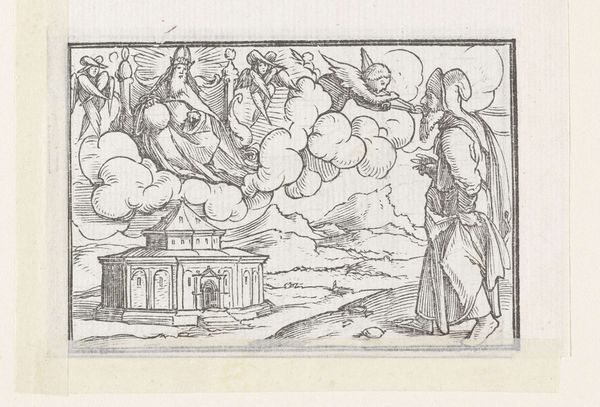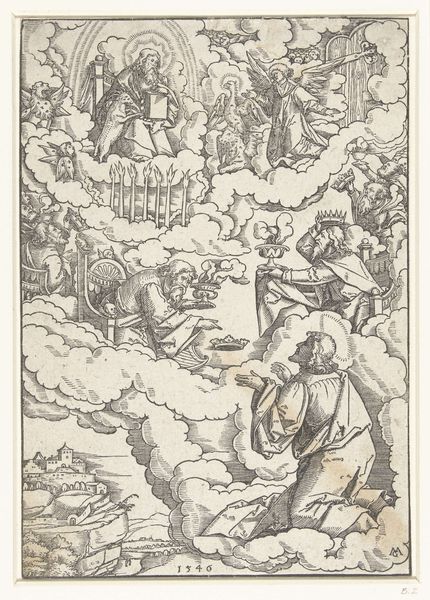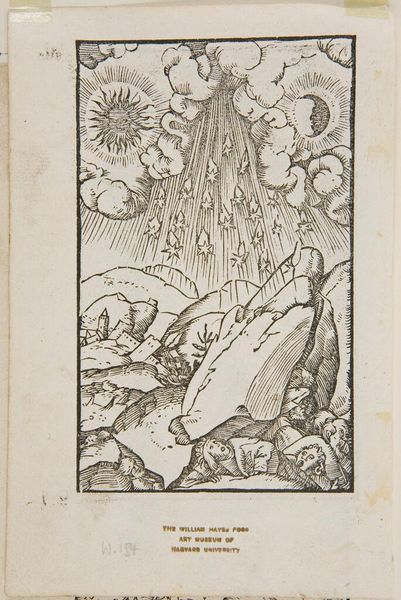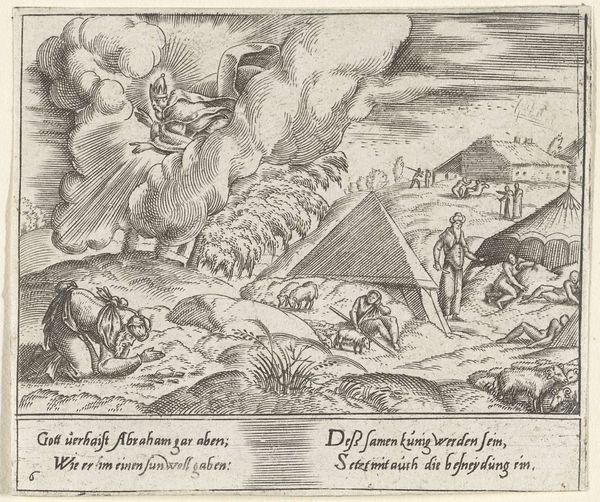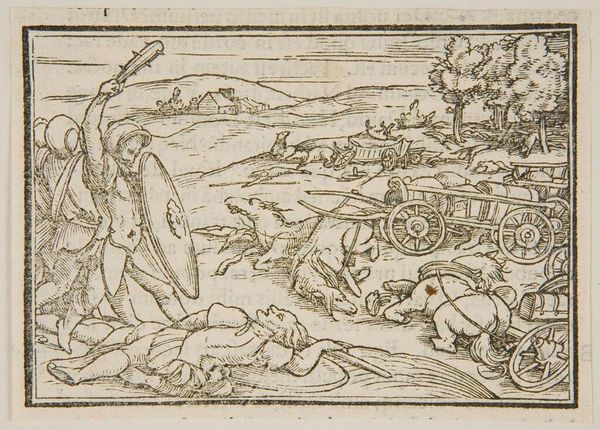
drawing, print, ink, engraving
#
drawing
#
narrative-art
# print
#
pen illustration
#
landscape
#
figuration
#
ink line art
#
ink
#
line
#
northern-renaissance
#
engraving
Dimensions: height 60 mm, width 85 mm, height 71 mm, width 99 mm
Copyright: Rijks Museum: Open Domain
Editor: So, here we have "Moses Receiving the Tablets of the Law," a pen and ink drawing, printed as an engraving by Hans Holbein the Younger in 1538. The starkness of the black ink against the white paper creates a really dramatic effect. How do you read this piece? Curator: This work demands analysis through its structural elements. Note how Holbein employs a strict linearity to delineate forms. Observe the contrast between the meticulously detailed foreground – the musculature of the hill, Moses’s drapery – and the more loosely defined background, featuring stylized clouds and schematic landscape elements. This intentional juxtaposition establishes depth but also, arguably, prioritizes the symbolic weight of the divine encounter. Editor: That’s interesting. The shift in detail does pull my eye to Moses. Is that contrast significant to the artwork's meaning? Curator: Indeed. The foreground's graphic clarity – every line contributing to a heightened sense of form – throws into sharp relief the divine, which is more nebulous, less easily defined through clear linear boundaries. Holbein manipulates our visual processing to underscore the ineffable nature of the divine. What do you observe regarding the placement of God within the cloud formation? Editor: God does seem confined within it, but His upper body leans outward. The use of the cloud element is doing compositional work in this print, maybe even helping us perceive the exchange between Moses and God, instead of purely a power dynamic? Curator: Precisely. Note how the lines of the clouds both envelop and emanate. This dual function visualizes the act of divine communication. Ultimately, Holbein delivers us a fascinating piece for compositional structure and graphic representation. Editor: I'm starting to appreciate how the print's apparent simplicity belies a much more sophisticated approach to the relationship between form and content! Thank you for your insight. Curator: My pleasure. Looking at art from a Formalist viewpoint allows the intrinsic aesthetic components, as you noted, to become significant features when assessing visual meaning.
Comments
No comments
Be the first to comment and join the conversation on the ultimate creative platform.
